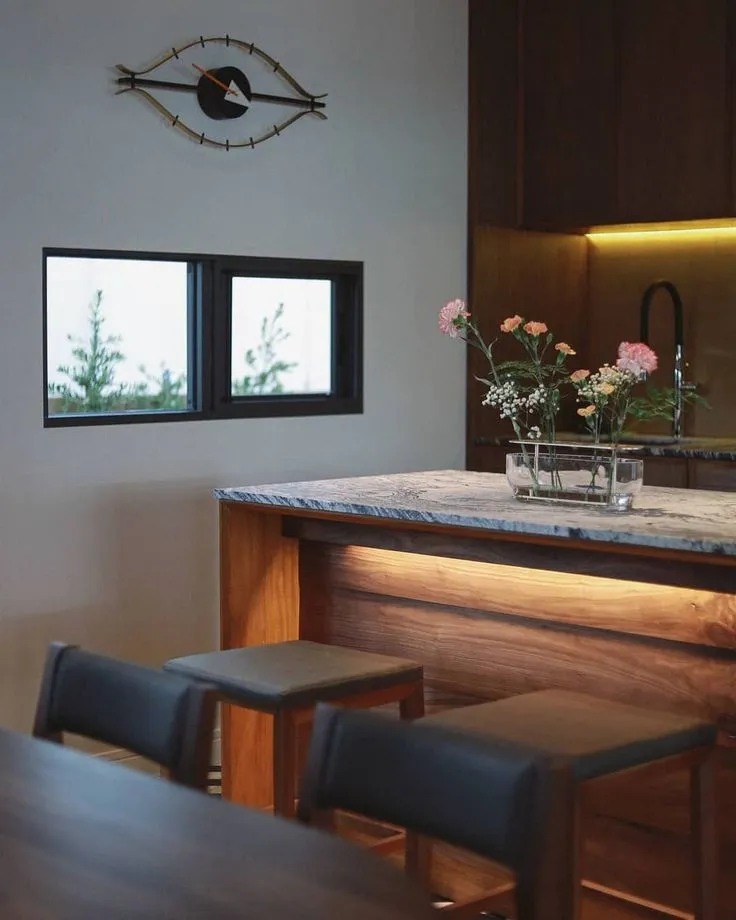Embracing Western Kitchen Decor in Japan
The allure of Western kitchen decor has found a unique and captivating presence in Japan, a country renowned for its rich cultural heritage and distinctive design sensibilities. This fusion of styles presents an exciting opportunity for homeowners to create spaces that are both functional and aesthetically pleasing. The incorporation of Western design elements into Japanese kitchens is not merely a trend but a reflection of the evolving lifestyle and preferences of modern Japanese society. It involves a delicate balance of incorporating elements from the West while still honoring the traditional Japanese principles of minimalism, functionality, and connection with nature. This blend creates kitchens that are both stylish and conducive to the demands of contemporary living.
The Fusion of Styles
The beauty of integrating Western kitchen decor in Japan lies in the harmonious blending of contrasting styles. Western kitchens often emphasize open layouts, prominent appliances, and a focus on social interaction. Japanese kitchens, on the other hand, traditionally prioritize efficiency, discreet storage, and a connection to nature through the use of natural materials. The fusion allows for the creation of kitchens that are spacious and inviting, yet remain organized and functional. This fusion can be achieved by carefully selecting design elements, color palettes, and materials that complement each other, resulting in a truly unique and personalized space. The key is to find a balance, ensuring that the kitchen reflects both the practicality of Western design and the serene aesthetic of Japanese tradition.
Understanding the Differences
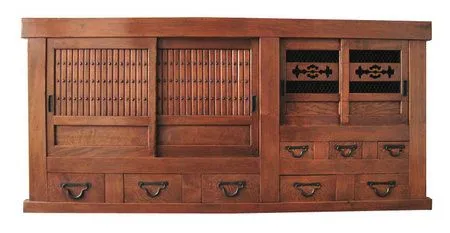
Understanding the differences between Western and Japanese kitchen design is essential for a successful fusion. Western kitchens typically feature larger footprints, islands, and prominent appliances. Japanese kitchens are often more compact, with hidden storage and a focus on maximizing space. The materials used also vary greatly, with Western kitchens often incorporating stainless steel, granite, and bold colors, while Japanese kitchens favor natural materials such as wood, bamboo, and neutral tones. Recognizing these differences is the first step in creating a kitchen that respects both traditions while catering to the needs of the homeowner.
Blending Functionality and Aesthetics
The ultimate goal is to blend functionality with aesthetics, creating a kitchen that is both practical and visually appealing. This can be achieved by incorporating Western-style cabinetry with Japanese-inspired finishes, such as light-colored wood or textured panels. Open shelving, a common feature in Western kitchens, can be used to display beautiful dishware and add visual interest. At the same time, incorporating elements of Japanese minimalism, such as clean lines and concealed storage, can maintain a sense of order and tranquility. The key lies in carefully selecting the elements that resonate with your personal style and combining them in a way that creates a harmonious and functional space. Consider the flow of the kitchen, ensuring that the layout supports both cooking and socializing, while still adhering to Japanese principles of efficiency and organization.
Top 7 Western Kitchen Decor Ideas
Idea 1 Modern Minimalism
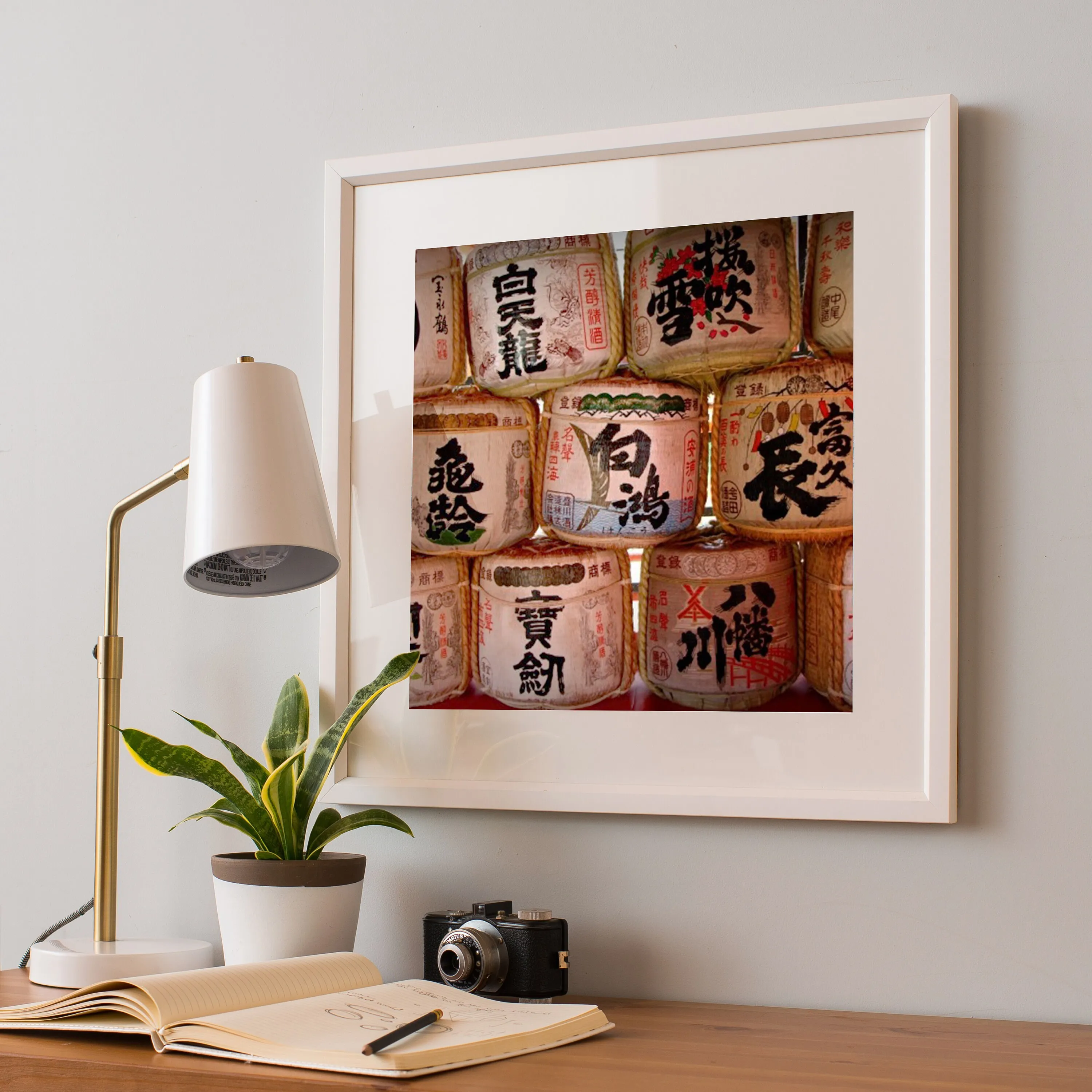
Modern minimalism emphasizes clean lines, uncluttered spaces, and a focus on functionality. This style is a natural fit for Japanese homes, which often prioritize simplicity and efficiency. Modern minimalist kitchens feature sleek cabinetry, integrated appliances, and a neutral color palette. The focus is on creating a serene and organized space where everything has its place. This aesthetic is easily adapted to Japanese kitchens, creating a calm and functional environment, perfect for preparing meals and enjoying time with family. Implementing this style involves choosing high-quality materials, minimizing ornamentation, and ensuring a well-organized layout.
Key Elements
- Sleek, handle-less cabinetry
- Integrated appliances
- Neutral color palette (whites, grays, blacks)
- Minimal ornamentation
- Clean lines and simple forms
Color Palette
The color palette for a modern minimalist kitchen in Japan typically revolves around neutral tones. White, gray, and black are the dominant colors, creating a sense of spaciousness and tranquility. These colors can be accented with natural wood tones for warmth and visual interest. Subtle pops of color, such as a bright backsplash or a vibrant piece of artwork, can add personality without disrupting the overall minimalist aesthetic. The goal is to create a calm and inviting space that feels uncluttered and organized.
Idea 2 Industrial Chic
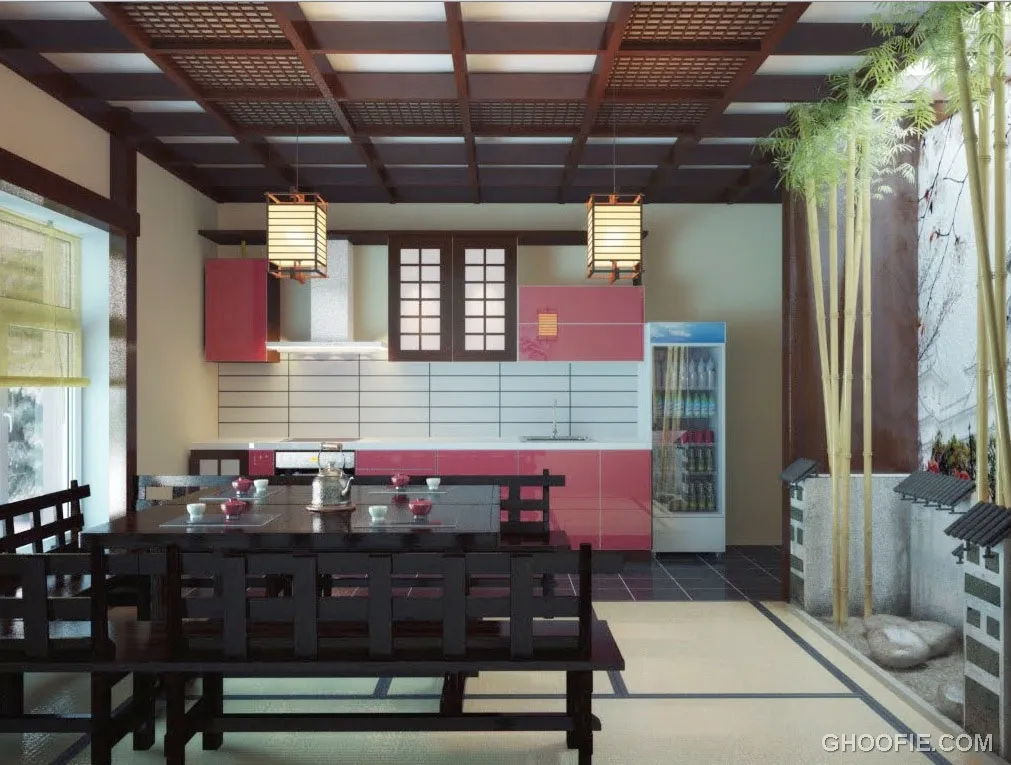
Industrial chic kitchens blend raw, unfinished elements with modern design. This style is characterized by exposed brick, concrete, metal accents, and reclaimed wood. In Japan, this style can be softened with the inclusion of natural materials and a focus on functionality. The industrial aesthetic provides a unique contrast to the more traditional Japanese interiors. The key is to balance the rough elements with refined touches, creating a space that feels both edgy and inviting. It is a great choice for those seeking a kitchen with personality and character, which also complements the sleekness of modern Japanese appliances.
Key Elements
- Exposed brick or concrete walls
- Metal accents (stainless steel, iron)
- Reclaimed wood for shelving and countertops
- Vintage or industrial-style lighting
- Open shelving
Material Choices
Material choices are crucial in achieving the industrial chic look. Consider incorporating exposed brick or concrete walls, metal accents such as stainless steel appliances and iron hardware, and reclaimed wood for countertops and shelving. These materials add texture and depth to the space, creating a visually interesting environment. Balance these raw elements with sleek, modern appliances and fixtures to add a touch of sophistication. The goal is to create a space that feels both edgy and inviting, balancing the raw with the refined.
Idea 3 Rustic Charm
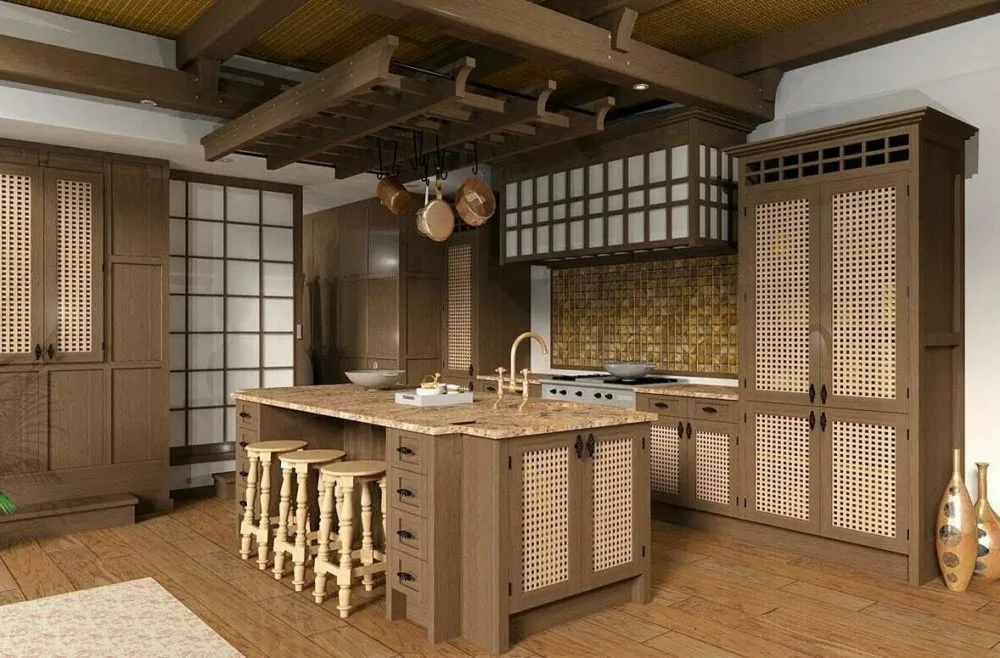
Rustic charm embraces natural materials, warm colors, and a sense of history. This style is a great way to infuse the kitchen with character and a welcoming atmosphere. Incorporate reclaimed wood, exposed beams, and vintage-inspired fixtures. In Japan, this style can be softened with the inclusion of elements of wabi-sabi, which celebrates the beauty of imperfection and the passage of time. The rustic style creates a cozy and inviting space that is perfect for those who appreciate warmth and authenticity. It is about creating a space that feels lived-in and loved, embracing the beauty of natural materials and handcrafted details.
Key Elements
- Reclaimed wood cabinetry and countertops
- Exposed beams
- Vintage-inspired lighting
- Farmhouse sink
- Neutral color palette with warm accents
Incorporating Natural Materials
The key to rustic charm is the incorporation of natural materials. Reclaimed wood is a fantastic choice for cabinetry, countertops, and shelving, adding character and warmth to the space. Stone or brick backsplashes can provide a tactile element and visual interest. Consider using natural-fiber rugs and textiles to soften the space and create a cozy atmosphere. The goal is to create a space that feels connected to nature and celebrates the beauty of imperfection.
Idea 4 Coastal Vibes
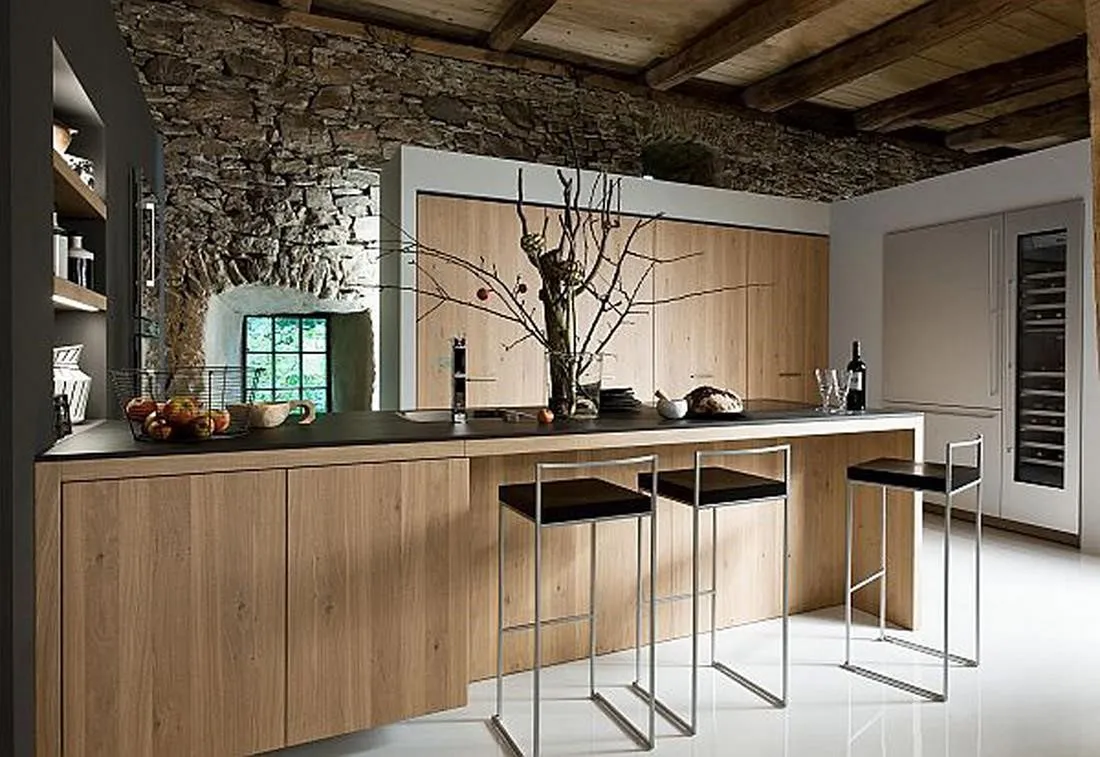
Coastal vibes bring the serenity of the sea into your kitchen. This style is characterized by light, airy spaces, natural light, and a color palette inspired by the ocean. Think of soft blues, greens, and whites, along with natural textures like wood and wicker. In Japan, this style complements the country’s connection to the sea and its appreciation for natural beauty. The coastal aesthetic can create a refreshing and relaxing environment, perfect for a casual and inviting kitchen. This look works particularly well in homes near the coast, or for those who want to evoke the feeling of a seaside retreat.
Key Elements
- Light and airy color palette (blues, greens, whites)
- Natural light
- Wood accents (light or weathered)
- Wicker or rattan furniture
- Coastal-themed accessories
Color Scheme and Accessories
The color scheme is paramount in achieving the coastal look. Opt for a palette of soft blues, greens, and whites, reminiscent of the ocean and sky. Use these colors on walls, cabinetry, and accessories. Incorporate natural wood accents, such as light or weathered wood countertops and open shelving. Add coastal-themed accessories like seashells, driftwood, and nautical-inspired artwork to complete the look. The goal is to create a space that feels bright, airy, and connected to the sea.
Idea 5 Scandinavian Simplicity
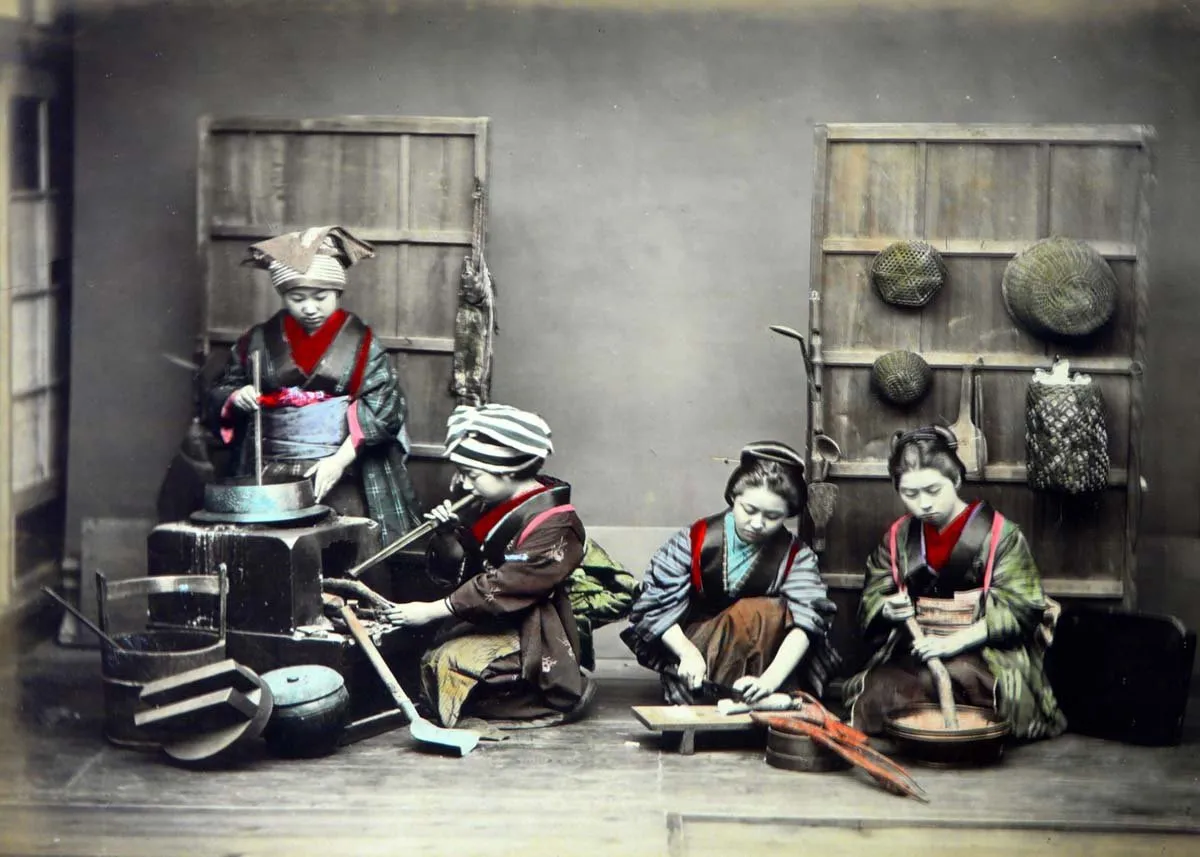
Scandinavian simplicity emphasizes clean lines, functionality, and a connection to nature. This style is a perfect match for Japanese homes, blending well with existing minimalist design principles. The key is to focus on light colors, natural materials, and a clutter-free environment. In Japan, this style can be particularly successful, as it aligns with the culture’s emphasis on simplicity and a connection to the natural world. This style creates a calm and inviting space. It is perfect for those who appreciate a minimalist aesthetic and a focus on functionality.
Key Elements
- Light wood cabinetry and flooring
- White or light-colored walls
- Minimalist design
- Natural light
- Functional and uncluttered spaces
Light and Airy Design
The key to Scandinavian design is creating a light and airy space. Use light-colored wood for cabinetry and flooring, and paint walls in white or light neutral tones. Maximize natural light by keeping windows clear and unobstructed. Choose simple, functional furniture and accessories, and avoid clutter. The goal is to create a space that feels bright, inviting, and conducive to relaxation.
Idea 6 Farmhouse Flair
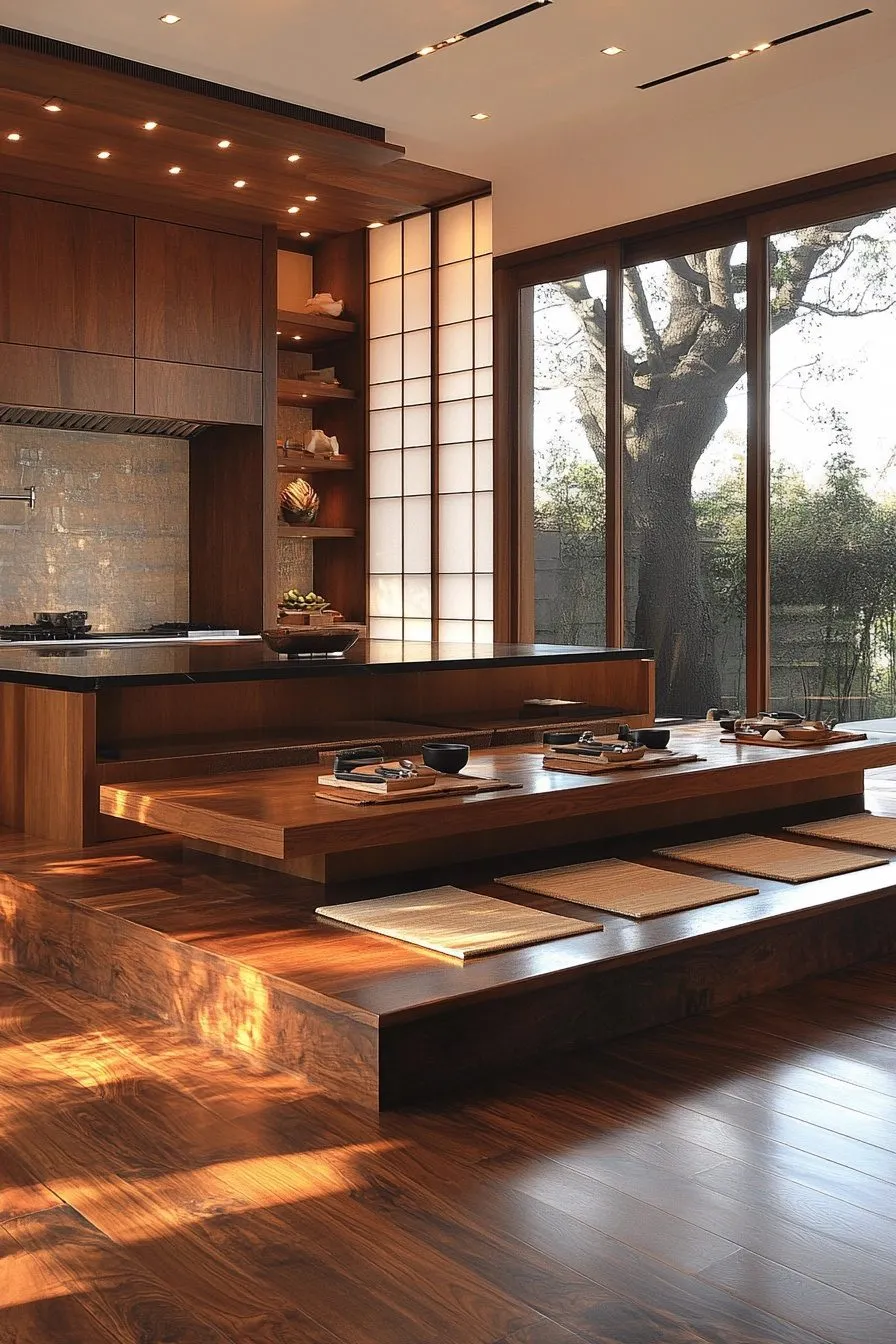
Farmhouse flair blends rustic charm with modern comfort. This style incorporates elements of both traditional and contemporary design. The key is to create a warm, inviting space with a focus on functionality. Incorporate elements like Shaker-style cabinetry, farmhouse sinks, and natural materials. In Japan, the farmhouse style can be adapted to incorporate elements of traditional Japanese design, creating a unique and inviting space. This style offers a blend of comfort and style.
Key Elements
- Shaker-style cabinetry
- Farmhouse sink
- Butcher block countertops
- Neutral color palette
- Vintage or antique accents
Mixing Old and New
The essence of the farmhouse style lies in mixing old and new. Incorporate Shaker-style cabinetry with modern appliances. Use a farmhouse sink and butcher block countertops. Add vintage or antique accents like a rustic dining table or a collection of antique dishware. Balance these elements with modern lighting and fixtures to create a space that feels both timeless and contemporary. The goal is to create a space that feels lived-in and loved, with a blend of comfort and style.
Idea 7 Bohemian Eclecticism
Bohemian eclecticism embraces a mix of patterns, textures, and global influences. This style is all about expressing personality and creating a space that feels collected and unique. In Japan, this style can be adapted by incorporating elements of traditional Japanese design, such as natural materials and a focus on craftsmanship. The Bohemian style provides an opportunity to be creative and express personal style. This style is a great choice for those who enjoy mixing and matching different elements, creating a kitchen that is vibrant and full of personality.
Key Elements
- Mix of patterns and textures
- Global influences (textiles, artwork)
- Vintage or antique furniture
- Plants and greenery
- Bold colors and unique accents
Pattern and Texture
Pattern and texture are the heart of bohemian style. Mix and match different patterns and textures in textiles, rugs, and artwork. Incorporate global influences with textiles, artwork, and unique decorative items. Add vintage or antique furniture for character and a sense of history. Include plants and greenery to bring the outdoors in and add a touch of freshness. The goal is to create a space that feels layered, inviting, and full of personality.
Integrating Western Decor in Your Japanese Kitchen
Integrating Western decor in a Japanese kitchen requires careful planning and consideration. Start by assessing the existing space and determining the elements you want to incorporate. Consider the layout of the kitchen and how you can best integrate Western-style elements. Think about the appliances, cabinetry, and materials that will work well in the space. Blend Western design with Japanese principles for a harmonious space. When selecting your new kitchen elements, consider the style and size of your home, the amount of natural light, and the flow of your kitchen to create a space that meets your needs. Embrace your personal style and create a space that feels like home.
Adapting to Space
Adapting Western decor to a Japanese kitchen often involves maximizing space and incorporating efficient storage solutions. Japanese kitchens tend to be smaller than their Western counterparts, so careful planning is essential. Opt for space-saving appliances, built-in storage, and multi-functional furniture. Think about the flow of the kitchen and ensure that the layout is both functional and aesthetically pleasing. Consider every detail, from the kitchen counter and the sink to the appliances and the storage options, and make sure they will meet the needs of your cooking style. The goal is to create a space that is both stylish and practical, making the most of every square inch.
Considering Japanese Design Principles
When integrating Western decor in your Japanese kitchen, always consider the principles of Japanese design. Embrace minimalism, a focus on functionality, and a connection to nature. Incorporate natural materials such as wood, bamboo, and stone. Use a neutral color palette and avoid clutter. Create a sense of calm and tranquility. The goal is to create a space that reflects both Western and Japanese design traditions, resulting in a unique and harmonious kitchen space. This careful balance will create a space that is both functional and visually appealing, where you can enjoy preparing meals and spending time with family and friends.
Conclusion
Incorporating Western kitchen decor in Japan is an exciting opportunity to blend cultures and create a truly unique space. By understanding the differences between Western and Japanese design and embracing a fusion of styles, you can create a kitchen that is both functional and aesthetically pleasing. Whether you choose a modern minimalist approach, embrace industrial chic, or opt for rustic charm, the possibilities are endless. By carefully considering your personal style, the layout of your kitchen, and the principles of Japanese design, you can create a space that is both beautiful and practical, reflecting your unique taste and lifestyle. The perfect blend of Western and Japanese elements will transform your kitchen into the heart of your home.
